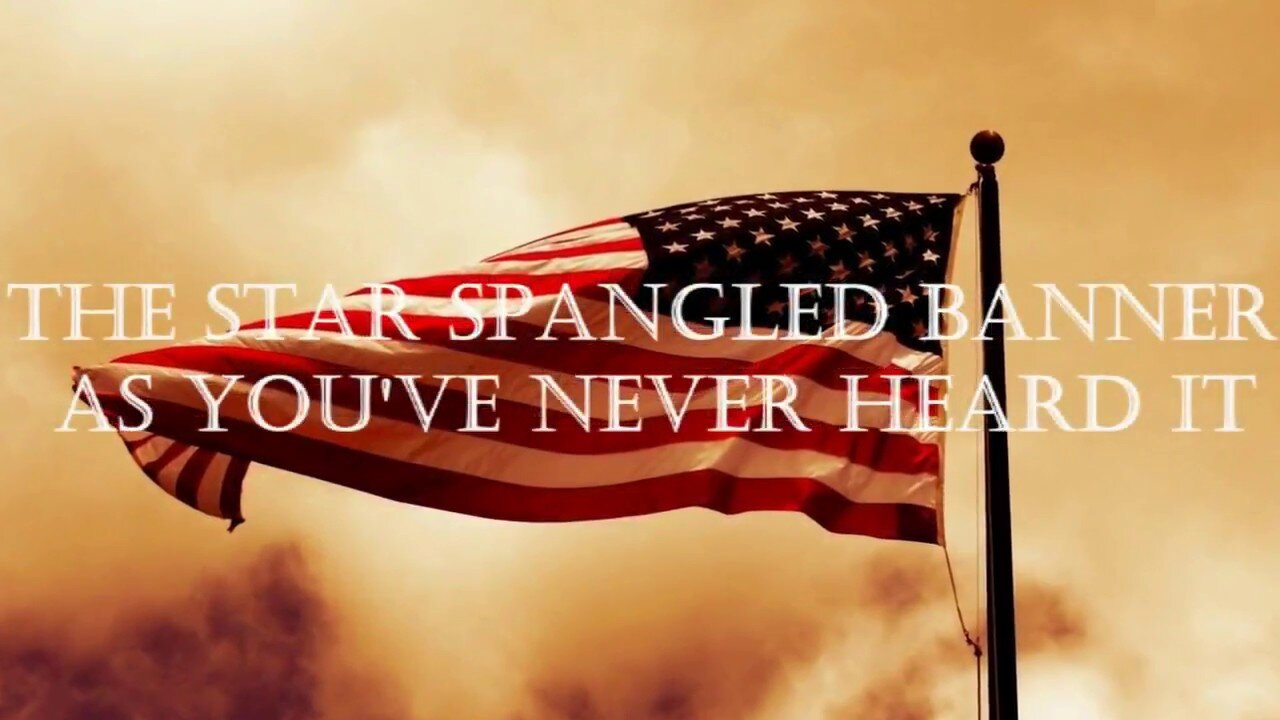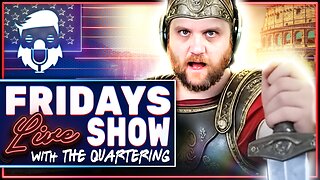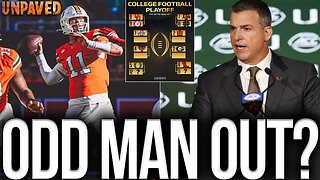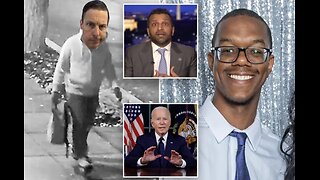Premium Only Content

The Star Spangled Banner As You've Never Heard It
Francis Scott Key was a 35-year-old American lawyer. He is credited with being one of America's earliest and most beloved Patriots. He penned America's beloved National Anthem. What few people realize is that he immigrated from Ireland to get away from British oppression. Not only was he Irish, he was an Irish Jew. I know this because a very dear friend is a direct descendant of his. She told me about their family history as well as hers. She was born an Irish Jew, raised as a Jehovah's Witness, but converted to Christianity as a young adult. She is a veteran of the United States Navy herself.
Every time I hear an American spouting off about how Jews are un-American I get angry. Those of you in this category are ignorant. You don't know squat. It is time to put away your ignorance & stupidity once and for all.
Jews are no different than anyone else. There are good ones and bad ones. My friend Pamela Geller is a Jewess and she is an ally to our cause.
https://gellerreport.com/
On a rainy September 13, 1814, British warships sent a downpour of shells and rockets onto Fort McHenry in Baltimore Harbor, relentlessly pounding the American fort for 25 hours. The bombardment, known as the Battle of Baltimore, came only weeks after British forces attacked Washington, D.C., burning the United States Capitol, the Treasury and the White House (then known as the President’s House). It was another chapter in the ongoing War of 1812.
A week earlier, Francis Scott Key, a 35-year-old American lawyer, had boarded the flagship of the British fleet on the Chesapeake Bay in hopes of persuading the enemy to release the physician William Beanes, a friend who had recently been arrested. Key’s tactics were successful, but because he and his companions had gained knowledge of the impending attack on Baltimore, the British did not yet let them go. Allowed to return to their own vessel, the Americans remained under heavy scrutiny. On September 13, Key and Beanes watched as the barrage of Fort McHenry began some eight miles away.
“It seemed as though mother earth had opened and was vomiting shot and shell in a sheet of fire and brimstone,” Key later wrote. But when darkness arrived, he saw only red erupting in the night sky. Given the scale of the attack, he was certain the British would win. The hours passed slowly, but in the clearing smoke of “the dawn’s early light” on September 14, he saw the American flag—not the British Union Jack—flying over the fort, announcing an American victory.
Key put his thoughts on paper while still on board the ship, setting his words to the tune of a popular English song. His brother-in-law, commander of a militia at Fort McHenry, read Key’s work and had it distributed under the name “Defense of Fort M’Henry.” The Baltimore Patriot newspaper soon published it, and within weeks, Key’s poem, now called “The Star-Spangled Banner,” appeared in print across the country, immortalizing his words and forever naming the flag it celebrated. The song remained popular throughout the 19th century, emerging as a symbol of unity during the Civil War, but only became the U.S.’s official national anthem in 1931.
The flag that inspired Key’s composition still survives today, though it’s fragile and worn by time. First lent to the Smithsonian Institution in 1907, this iconic artifact is now on view in its own state-of-the-art gallery at the National Museum of American History (NMAH).
“The Star-Spangled Banner is a symbol of American history that ranks with the Statue of Liberty and the Charters of Freedom,” said Brent D. Glass, the museum’s then-director, in 2007. “The fact that it [was] entrusted to the National Museum of American History is an honor.”
From: https://www.smithsonianmag.com/history/real-story-behind-star-spangled-banner-flag-inspired-national-anthem-149220970/
FAIR USE NOTICE: Videos & Images on this channel may contain copyrighted material. Such material is made available for educational purposes only. This constitutes a 'fair use' of any such copyrighted material as provided for in Title 17 U.S.C. section 106A-117 of the U.S. Copyright Law.
-
 56:44
56:44
The Quartering
2 hours agoSpam Calls Are Out Of Control, Candace Hits Rock Bottom & More Poison Food
21.5K51 -
 47:44
47:44
Tucker Carlson
2 hours agoRupert Lowe Warns of the Globalist Agenda Destroying the West and the Revolution Soon to Come
47.8K84 -
 1:16:03
1:16:03
Sean Unpaved
3 hours agoWill Miami Be "ODD MAN OUT" Of The College Football Playoff? | UNPAVED
12.2K -
 LIVE
LIVE
Jeff Ahern
1 hour agoFriday Freak out with Jeff Ahern
181 watching -
 27:03
27:03
The Kevin Trudeau Show Limitless
2 days agoThey're Not Hiding Aliens. They're Hiding This.
31.2K44 -
 2:04:26
2:04:26
The Culture War with Tim Pool
4 hours agoWoke Has INFECTED Goth, Punk, & Metal, MAGA Must Save the Art | The Culture War Podcast
117K51 -
 1:12:25
1:12:25
Steven Crowder
4 hours agoCNN Declares J6 Pipe Bomber White & Nick Fuentes Interview Reaction
286K240 -
 LIVE
LIVE
Dr Disrespect
4 hours ago🔴LIVE - DR DISRESPECT - ARC RAIDERS - FREE LOADOUT EXPERT
1,323 watching -
 1:08:35
1:08:35
Rebel News
3 hours agoPublic Safety reviewing gun grab, Migrant offenders getting lighter sentences | Rebel Roundtable
24.1K3 -
 2:27
2:27
Buddy Brown
7 hours ago $0.80 earnedREDNECK JINGLE BELLS! | Buddy Brown
14.2K3